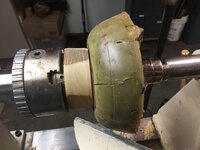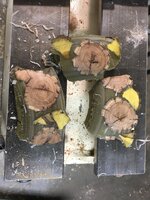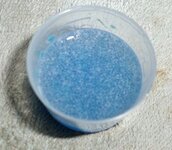triw51
Member
I tried to cast some wood pieces for a bowl using similar 41. I mixed the resin according to directions and added some brass powder (approx. 1 1/2 teaspoons to 2 cups of resin). The resin turned emerald green and had cracks in between the wood.
Could this be a chemical reaction between the brass and the resin? I cast some colored pencils in that resin last week and no problem so I don't think it is the resin. Any ideas what caused the color change and cracks?
I tried to up load pictures but can not get it to work.
Thank you for any help. William
Could this be a chemical reaction between the brass and the resin? I cast some colored pencils in that resin last week and no problem so I don't think it is the resin. Any ideas what caused the color change and cracks?
I tried to up load pictures but can not get it to work.
Thank you for any help. William



